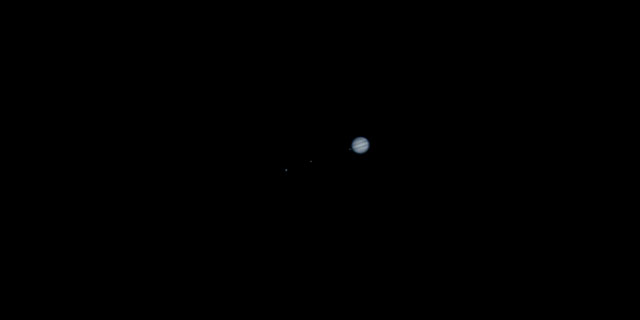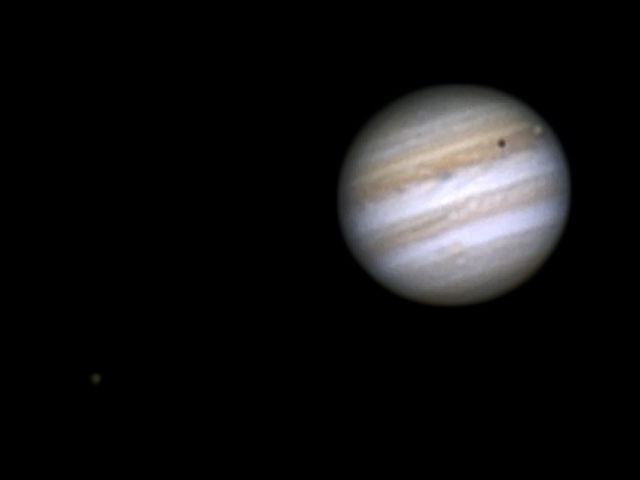- Images
- Blog
- Tools
- Questar
- The Questar telescope
- Questar resource links
- Search for Questar info
- 172mm Focal Reducer
- Afocal adapter for point and shoot camera
- Camera adapter lengths
- Camera adapter threading
- Camera connection
- Camera focusing
- Custom counterweight
- Drift Alignment Joy
- Finder Eyepiece Compatibility
- The Questar Moon 1981
- Questar Powerguide II Battery Life
- Questar Zone, How to Service Videos
- Red Dot finder mount for Questar
- Questar Viewing Table
- Wedge mounts
- White light solar filters comparison
- How to
- Get started in astronomy
- Astro RaspberryPi Camera and kin, the ASIAir and StellarMate
- Blind Smart-phone Equatorial Wedge or GEM Polar Alignment
- Camera phone adapter
- Celestron FirstScope with equatorial tripod mount
- Coat Pocket Astrophotography
- Day-lapse Images of Earthshine on the Crescent Moon
- Dobsonian Carrying Case
- DSO Astrophotography without a Telescope
- DSO imaging without a star tracker
- Estimating image resolution
- Lunar Eclipse Photography
- Moon photography - a dozen ways to shoot the Moon
- Meteor shower photography & planning
- Matching image sensor size to telescope resolution
- Narrow band imaging with color cameras
- Planetary Image Workflow
- Print and Display Astrophotography
- Observing
- Events
- More
- About
- Contact
Fibs, damn lies, telescopes, and astrophotography
Most people are surprised by the gap between the images on the box of their telescope and what they see at the eyepiece. Many 60 mm telescope have promised 600 X colorful views of Jupiter, and the real view is a small grey blob.
Damn lies
Visual views through a telescope are limited by the laws of nature and many telescopes are sold with promises that are impossible to keep.
The magnifying power of a telescope is calculated by dividing its focal length by the focal length of the eyepiece. This is only part of the story.
Images are blurred by diffraction, because light behaves as a wave. The amount of diffraction is determined by the aperture size (diameter of the primary mirror or lens) of the telescope. This limits the amount of magnification possible with a telescope, before the image becomes too dim and blurry to look good or see more detail.
A good rule of thumb for visual observing is 2X magnification for every millimeter (50X per inch) of objective diameter. For a 60 mm telescope this is about 120 X.
A bright, crisp, 120 power view of a planet is much smaller than anything you would notice in an advertisement or a big telescope box.
Fibs and cameras
The gap between what you can see visually, and the image that can be captured with a digital camera and post processing is another surprise.
These images were taken with an 89 mm telescope. The first is a close approximation to a typical image that I see visually using this telescope:

Three of Jupiter's moons are visible and the cloud bands. On a night of very good seeing, I can make out the Great Red Spot (if it is facing earth) and even glimpses of shadow transits. Picking out details by eye takes a lot of patience and practice. It gives you an appreciation for the discoveries of astronomers who didn’t have big telescopes or digital cameras to work with.
Let's take a look at what can be done with a digital camera and the same telescope. Making this image took many hours of work. I took 2000 images in a three minute span, found the best 128, statically stacked them to produce a single low noise image, deconvolved the image to make it sharper, and cropped and tweaked the final image.
Wow, quite a difference! If I’m selling the telescope, I can honestly put the 2nd image on the box. If I’m lazy or more deceptive, I’ll put a Hubble Space Telescope or space probe image on the box.
Most telescope vendors go with the last option. A realistic visual observing image, like my first one above, is buried in the manual, if shown at all.
Capturing an image like this requires more than the telescope and a suitable camera. You need a very long equivalent focal length, 5000 mm or so. Capturing a long focal length image is very sensitive to camera shake. It requires a very solid tripod and mount. The added equipment easily costs several times that of a moderately priced telescope and mount. Astrophotography with a telescope, is difficult and costly, not for everyone. If you are interested, the best way to get started in astrophotography is without a telescope.
Visual observing with a telescope
Many people prefer visual observing. You can see an detailed image like the one above by eye in an amateur telescope. It takes about a 400mm aperture class instrument on a very good night. Detailed visual views of the planets require the cost, weight, and complexity that goes with a large amateur telescope.
Visual observing with a small telescope can be great fun. Don't be discouraged by unrealistic expectations. Bright close up views of the Moon's craters, watching the dance of Jupiter's moons and trying to spot features, jewel-like star clusters, and the contrasting colors of binary stars are all within reach. The smaller and easier a telescope is to set up, the more often you will use it.
Getting help
A great place to get advice on selecting a telescope best suited to your needs is Starizona's Telescope Basics. They also provide detailed information on how to use the scope and mount that you already have.
I keep a list of other print and on-line resources that I recommend..
This note was rewritten from an answer that I wrote to a question about why Jupiter was just a round white blob in a telescope on Quora.
Content created: 2017-08-09
Comments
![]() Submit comments or questions about this page.
Submit comments or questions about this page.
By submitting a comment, you agree that: it may be included here in whole or part, attributed to you, and its content is subject to the site wide Creative Commons licensing.

Blog
Silver City Heart & Soul Nebulae Revisited
Medulla or Garlic Nebula, CTB1, Abell 85
Nebulae afire off the belt of Orion
City Lights Horsehead & Flame Nebulae
Flaming Star Nebula dark sky vrs city sky face-off
Christmas Tree Cluster and Cone Nebula with more exposure
Christmas Tree Cluster with the Cone Nebula
Horsehead Nebula Face-Off Bortle 2 vrs Bortle 7
California Nebula Face-Off Bortle 2 vrs Bortle 7
Western Veil Nebula from Marfa
Trifid and Lagoon Nebulae Drizzle Stacked
North America and Penguin Nebulae Drizzle Stacked
Return to Coconino Andromeda, M31
Revisiting the Willow House Rosette
Corazón Incendida, the Heart Nebula
Elephant Trunk with the Garnet Star
Balanced HO North America & Pelican Nebulae
The Lagoon & Trifid Nebulas from Marfa
Western Veil Nebula from Marfa
The Great Winter Solstice Conjunction of Jupiter and Saturn
Two days to the Great Jupiter Saturn Conjunction
Worlds Apart, the Jupiter Saturn Conjunction
Raspberry Pi HQ camera first light
Waxing Crescent Moon with earthshine and stars
Vixen Porta II mount adapter or aluminum disk with holes #2
The 2019 ACEAP Expedition to Chile
Universe of Stories: Getting Started in Astronomy
View an Apollo flag on the Moon from Earth?
Apollo 50th is my 24th Flickr Explore Selection
Shooting the video stars - Moon and Jupiter
Ready for a change in perspective
Jupiter and the Galilean Moons through a camera lens
2022 the Solar System in one view
As hard to see as a doughnut on the Moon
Santa Inez miners church Terlingua
Waning gibbous Moon early Christmas Eve
Christmas eve on the eastern limb of the Moon
Mars at 23.3 arc sec with Syrtis Major
BadAstroPhotos Web Site Analytics
Saturn with Pixinsight workflow
Mars Update from Mauri Rosenthal
Waxing Gibbous Moon Terlingua Texas
Io Transit of Jupiter with the Great Red Spot
Not so bad Astro after 2 years
Eyes of the Llama from Urubamba
Moon and Venus over Cusco's El Monasterio
Tiangong-1 Space Station reentry tracking
Apollo - 50 years of human footprints on the Moon, complete!
Waxing Crescent Moon after Astrophotography Meetup
The Great American Eclipse from Above and Below
A million astro photo views on Flickr
Ansel Adams: Moonrise, Hernandez, New Mexico
December Solstice Crescent Moon with Earthshine
January 31 Blue Moon Lunar Eclipse
The Total Solar Eclipse in half a minute
2017 Solar Eclipse from a million miles away
Longhorn Eclipse from a Wyoming Hilltop
Fibs, damn lies, telescopes, and astrophotography
Full Moon before Total Solar Eclipse 2017
Longhorn Crescent Moon from Austin
The Crescent Moon with Jupiter and moons
Eye of the storm 2 - Juno & Jupiter's Great Red Spot
Eye of the storm - Juno & Jupiter's Great Red Spot
A million miles from earth, the Moon and earth east and west
Saturn with Titan, Dione, Tethys, & Rhea
Animated transit of Jupiter by Io
Solar Eclipse 2017 Highway Traffic Map
Mid-South Star Gaze + Questar Meet
Sweet Home Alabama Transit of Jupiter by Io
Update on AutoStakkert on macOS
Diffraction is not the limit for digital images
Teasing life into planetary images
Moon camera comparison: DSLR & planetary cameras
Waning Crescent Moon with Earthshine
1st day of Spring last quarter Moon
Lewis Morris Rutherfurd's Moon
Super Moonrise over Lady Bird Lake
360 Tower pierces the Super Moon
Lisbeth's Birthday Crescent Moon
The Moon and Mars from the Astro Café
Silent and Mechanical Shutter Comparison
Austin's Solar Sidewalk Sun-Day
Another Longhorn Moon over Austin
Jupiter and Venus do a father-daughter dance
Sunset with Mercury, Jupiter, and Venus
Mercury, Jupiter & Venus after sunset
3 months, 92 nations, 3750 visitors, 100,000+ images served
Upcoming Conjunction of Jupiter & Venus
The Perseid Meteor Shower with the Andromeda Galaxy
Waxing crescent Moon from UHD Video
NWS Interactive Digital Forecast Map
M7 the Ptolemy Cluster preview
Five Planets in the Sky at Dusk
Lucky Fat Waning Crescent Moon
Two months, 80 nations, and an embarrassing bug
Saturn with 5 moons: Titan, Rhea, Enceladus, Tethys, & Dione
The nearly full Moon and Saturn with a short tube refractor


 2025
2025
